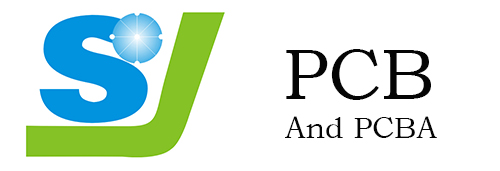
When it comes to blind and buried vias, let's start with traditional multilayer boards. The structure of the standard multi-layer board is composed of inner and outer layers, and then the process of drilling and metallization in the holes is used to achieve the internal connection function of each layer of circuits. However, due to the increase in circuit density, the packaging method of parts is constantly updated.

In order to allow more and higher performance components to be placed in the limited PCB area, in addition to the thinner line width, the aperture is also reduced from 1 mm of DIP jack to 0.6 mm of SMD, and further reduced to less than 0.4 mm. However, it will still occupy the surface area, so there are buried holes and blind holes, which are defined as follows:
A. Buried Via
The through holes between the inner layers cannot be seen after pressing, so there is no need to occupy the area of the outer layer
B. Blind Via
applied to the connectivity of the surface layer and one or more inner layers.
1. Buried hole design and fabrication
The manufacturing process of buried vias is more complicated than traditional multilayer boards, and the cost is also higher. Figure 20.2 shows the difference in the fabrication of traditional inner layers and inner layers with buried vias, explaining the laminated structure of eight-layer buried vias. Buried vias Cum - General specifications for through-hole and PAD size.
2. Blind hole design and production
The board with high density and double-sided SMD design will have the outer layer up and down, and the I/O vias will interfere with each other, especially when the VIP (Via-in-pad) design is a trouble. Blind vias can solve this problem. In addition, with the prevalence of radio communication, the design of the circuit must reach the range of RF (Radio frequency), which exceeds 1GHz. The blind hole design can meet this demand.
There are three different methods of making a blind hole plate, as described below
A. Mechanical fixed depth drilling
In the process of traditional multilayer boards, after pressing, the drilling machine is used to set the depth of the Z-axis, but this method has several problems
a. The output of only one diamond at a time is very low
b. The levelness of the drilling machine table is strictly required, and the drilling depth setting of each spindle should be consistent, otherwise it is difficult to control the depth of each hole
c. In-hole plating is difficult, especially if the depth is greater than the aperture, it is almost impossible to do in-hole plating.
B. Sequential lamination
Taking an eight-layer board as an example, the sequential pressing method can simultaneously produce blind and buried vias. First, make four inner layer boards in the way of general double-sided skin and PTH (other combinations are also possible; six layersboard + double-sided board, two upper and lower double-sided boards + inner four-layer board) and then press the four pieces together into a four-layer board, and then carry out the production of full through holes. This method has a long process and higher cost than other methods, so it is not common.
C. Non-machine drilling method of Build up Process
At present, this method is most favored by the global industry, and it is not too much in China. Many major manufacturers have manufacturing experience.
This method extends the concept of Sequential lamination mentioned above, adding layer by layer to the outside of the board, and using non-machine-drilled blind holes as the interconnection between the layers. There are three main methods, which are briefly described as follows:
a.Photo Defind photosensitive hole-forming method uses photoresist, which is also a permanent medium layer, and then for a specific position, the film is exposed and developed to expose the copper pad at the bottom, forming a bowl-shaped blind hole, and then chemically Comprehensive addition of copper and copper plating. After etching, the outer layer circuit and Blind Via are obtained, or instead of copper plating, copper paste or silver is filled to complete the conduction. According to the same principle, it can be added layer by layer.
b.laser Ablation laser hole burning Laser hole burning can be divided into three; one is CO2 laser. One is Excimer laser and the other is Nd:YAG laser. These three types of laser hole burning
c. Thousand-type plasma etching (PlasmaEtching) This is the patent of Dyconex Company, the commercial name is DYCOSTRATE method.
In addition to the non-machine drilling method in the above-mentioned three more commonly used build-up methods, the three blind via processes should be clear at a glance. Wet chemical etching (Chemical Etching) is not introduced here.
The definition and process of blind/buried vias are explained. After traditional multilayer boards are designed with buried/blind vias, the area is significantly reduced.
The application of buried/blind vias is bound to become more and more common, and its investment amount is very large. A certain scale of medium and large factories should aim at mass production and high yield rate, while smaller-scale factories should do what they can and seek a niche. (Niche) market. To plan sustainable operation.


